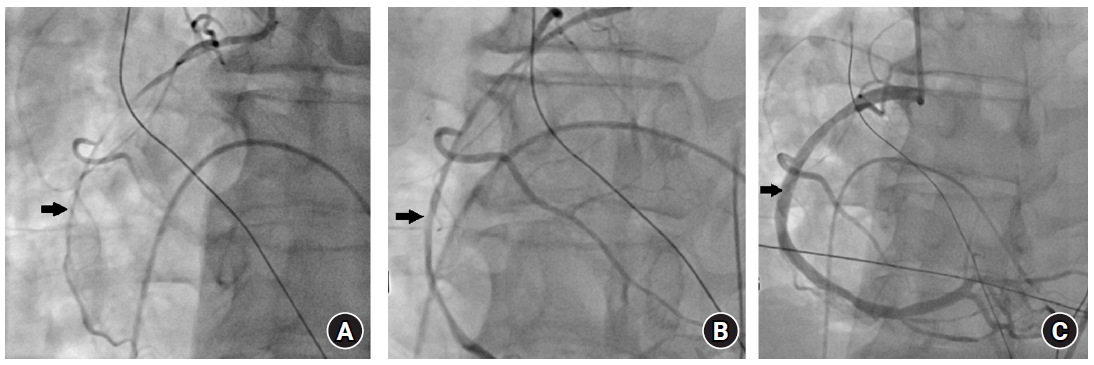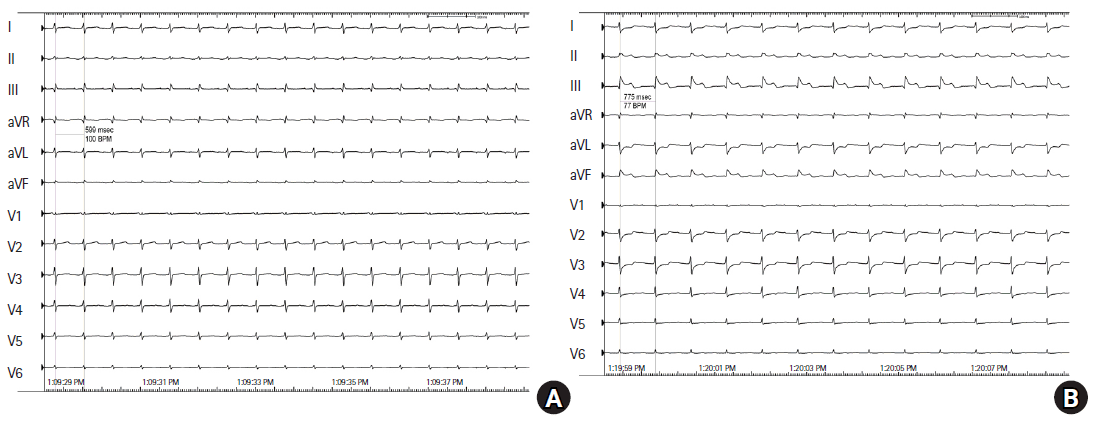1. Godai K, Hasegawa-Moriyama M, Kuniyoshi T, Kakoi T, Ikoma K, Isowaki S, et al. Three cases of suspected sugammadex-induced hypersensitivity reactions. Br J Anaesth. 2012; 109:216–8.
2. Takazawa T, Tomita Y, Yoshida N, Tomioka A, Horiuchi T, Nagata C, et al. Three suspected cases of sugammadex-induced anaphylactic shock. BMC Anesthesiol. 2014; 14:92.
3. Bhavani SS. Severe bradycardia and asystole after sugammadex. Br J Anaesth. 2018; 121:95–6.
4. Sanoja IA, Toth KS. Profound bradycardia and cardiac arrest after sugammadex administration in a previously healthy patient: a case report. A A Pract. 2019; 12:22–4.
5. Hoshino K, Kato R, Nagasawa S, Kozu M, Morimoto Y. A Case of repetitive cardiac arrest due to coronary vasospasm after sugammadex administration. Masui. 2015; 64:622–7.
6. Okuno A, Matsuki Y, Tabata M, Shigemi K. A suspected case of coronary vasospasm induced by anaphylactic shock caused by rocuronium-sugammadex complex. J Clin Anesth. 2018; 48:7.
7. Ko MJ, Kim YH, Kang E, Lee BC, Lee S, Jung JW. Cardiac arrest after sugammadex administration in a patient with variant angina: a case report. Korean J Anesthesiol. 2016; 69:514–7.
8. Yanai M, Ariyoshi K. Two cardiac arrests that occurred after the administration of sugammadex: a case of kounis syndrome. Case Rep Emerg Med. 2020; 2020:6590101.
9. Hachisuka M, Fujimoto Y, Oka E, Hayashi H, Yamamoto T, Murata H, et al. Perioperative coronary artery spasms in patients undergoing catheter ablation of atrial fibrillation. J Interv Card Electrophysiol. 2022; 64:77–83.
10. Min KC, Bondiskey P, Schulz V, Woo T, Assaid C, Yu W, et al. Hypersensitivity incidence after sugammadex administration in healthy subjects: a randomised controlled trial. Br J Anaesth. 2018; 121:749–57.
11. Miyazaki Y, Sunaga H, Kida K, Hobo S, Inoue N, Muto M, et al. Incidence of anaphylaxis associated with sugammadex. Anesth Analg. 2018; 126:1505–8.
12. Choi YJ, Park JW, Kim SH, Jung KT. Sugammadex associated profound bradycardia and sustained hypotension in patient with the slow recovery of neuromuscular blockade. Anesth Pain Med. 2019; 14:299–304.
13. Teng IC, Chang YJ, Lin YT, Chu CC, Chen JY, Wu ZF. Sugammadex induced bradycardia and hypotension: a case report and literature review. Medicine (Baltimore). 2021; 100:e26796.
14. Mirza K, Landoski K, Thakar D, Heir-Singh J, Jackson T, Kassab C. Sugammadex-associated hypotension, bradycardia, asystole, and death. Case Rep Anesthesiol. 2020; 2020:8767195.
15. Kounis NG. Coronary hypersensitivity disorder: the Kounis syndrome. Clin Ther. 2013; 35:563–71.





 PDF
PDF Citation
Citation Print
Print




 XML Download
XML Download